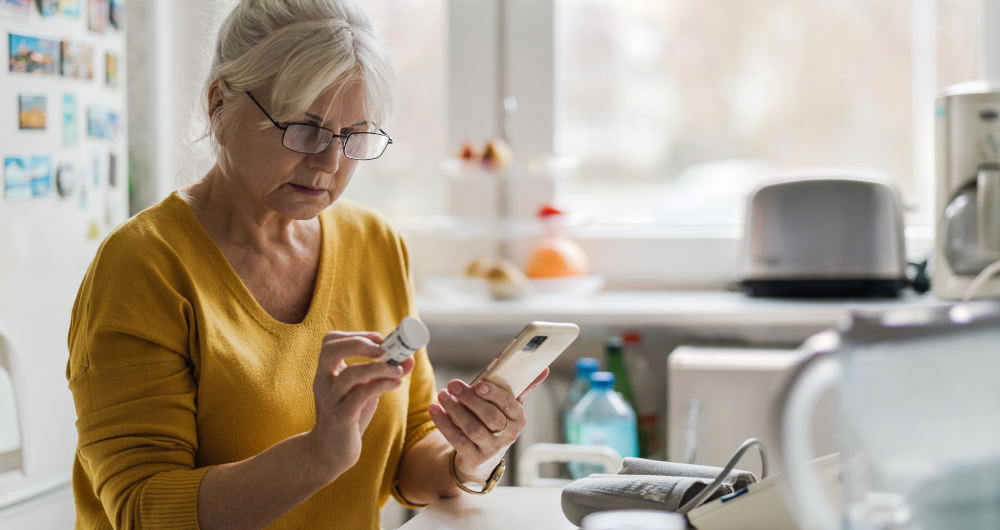How Home Health Technology Is Bringing Back House Calls
It’s an image that evokes memories of a simpler time—a white-coated physician ushered into a patient’s living room, perhaps offered a cup of tea before he reached for the stethoscope around his neck.
House calls may sound like a blast from the past; in reality, they’re the wave of the future. Mobile health (mHealth) apps make it easier than ever for providers to treat patients in the comfort of their own home, replacing the “doctor’s bag” of yesteryear with a smartphone or tablet and high-tech, portable medical devices.
Yes, it’s true—house calls are coming back in style.
Retro Is the New Home Healthcare
Pre-1950, nearly half of all doctors’ visits were house calls. So why are we returning to pre-Internet business model? There are several factors.
Technological advances in mobile healthcare
The advent of the smartphone, as well as the mHealth apps that came after, transformed the way practitioners could do business. Suddenly, diagnoses could be had at the push of a button, electronic health records (EHRs) followed the patient wherever they went, and wearable tech—such as heart rate, blood pressure, and blood glucose monitors—could immediately alert a home healthcare tech to a potential problem.
Medical devices have also become more high-tech. Ultrasound and EKG machines that used to take up half a room are now able to fit easily in the backseat of the practitioner’s car. It’s easier than ever to bring care to patients, rather than the other way around.
Aging baby boomers
As the most populous generation ages toward retirement, they become more dependent on medical services. However, these baby boomers also make up a significant part of the current workforce. According to the National Council on Aging (NCOA), we face a huge shortfall of providers by 2020, and it’s highly unlikely that we’ll come close to hitting the benchmark in that time.
The fact that the supply can’t meet the demand is concerning. However, the focus has shifted to making sure the providers we do have are empowered to utilize technology and mHealth apps to bridge the gap. This means a heavier reliance on artificial intelligence (AI) technology, video-based care, and, yes, even house calls.
Healthcare consumerism
While many healthcare or pharmaceutical companies have long been marketing to the public like consumer products or services do, the patient experience when working with providers and receiving care has often been a far cry from what they see on TV.
But patients have started holding healthcare providers to the same standards they do for any other paid service. Patients, or “healthcare consumers,” don’t want to drive to doctor’s office, find parking, sit in a crowded waiting room, waiting idly for a doctor to spend just 15 minutes with them.
Armed with the knowledge that they have the option to get the checkups they need in the comfort of their own home, patients have shown enthusiasm for this “retro” style of healthcare. And they want all of this at a fair price, without compromising their standard of care. House calls fit the bill on all fronts.
Intelligent scheduling software
In the heydays of house calls, you called the doctor and waited for him to show up in the next few hours or the next day. Now, intelligent scheduling software gives care coordinators and providers a sophisticated tool tell patients not only when the practitioner will arrive, but give real-time updates along the way.
Patients also can request a physician that speaks their language, has experience with their condition, or has seen them in the past. The software simply directs the appropriate home healthcare provider straight to their door during a time frame that works for the patient, caregiver, and the business. This type of intelligent automation opens the doors to costs savings, smoother processes and operations, and better patient experiences.
Healthcare Insurance Is Partnering With Home Health
House calls are convenient for patients, but that doesn’t mean convenience must come at a higher price.
Some insurance companies are just as excited about house calls as the patients. Consider this:
- Hospitalization rates dropped 30% with house calls, according to one study.
- Readmission rates can be reduced when a physician meets the patient on their own turf—as much as 41% in one cardiac post-surgery study.
- Medicare reimbursement is increasing for home visits, leading more providers to start offering the service.
The amount of services being offered at home is growing exponentially, too. Where once house calls were only offered occasionally to the infirm and homebound, or those approaching end-of-life, now there is a wide range of amenities on offer—prenatal, pediatrics, urgent care services, labs, and diagnostics, just to name a few. House call practices are opening all over the country, working to bring medical care to your home.
It’s a triple win: patients get the care they need in the convenience of their own homes, practitioners can deliver stellar service with less overhead and more mobile technology, and insurance companies actually save money while giving customers what they want.
Home Health Technology Brings (Back) the Future
Home health technology is improving the lives of healthcare consumers across the board. From the chronically ill to the chronically busy, the shift from clinic to home is returning, and insurance companies are noticing. We’re going back in time with 21st century technology—and all signs point to it being a move for the better!
Interested in learning more about mobile healthcare scheduling solutions? Book a demo today!


